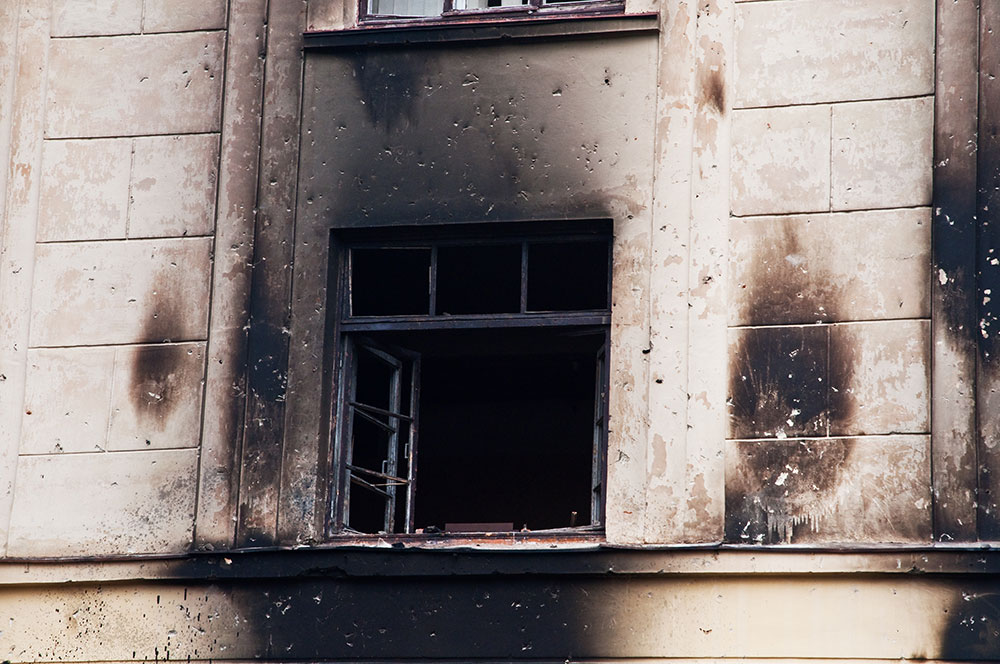In our last post, we began discussing smoke damage and how it is caused. First, we discussed the smoke is chemically composed of carbon monoxide, carbon dioxide, soot, and other chemicals from the items that have been burned. Knowing this not only informs us about how smoke behaves, thus causing damage, but also allows us to understand why smoke is so deadly to humans. This week we will continue by discussing why smoke behaves as it does.
How Does it Behave?
Temperature
Not only does a fire’s heat affect where the smoke travels in a particular room, but it will also affect how the rest of the house is damaged. It is common to find more smoke damage in enclosed areas that are cooler. Why? When the smoke particles are near the fire and thus warmer, they will move faster, allowing them to travel farther, but when they begin to cool, they will move slower and settle in areas that have cooler temperatures. Areas that tend to accumulate more smoke damage include:
- Behind furniture and other seemingly enclosed spaces
- Around and behind decorations
- Behind drapes and blinds
Sometimes the extent of the damage can be seen most clearly when you examine the smoke damage around these items and spaces in your home.
Particle Ionization
Much of understanding smoke damage means understanding the chemistry behind how smoke and other particles react to temperature and each other. Don’t worry, we are not going to give you a highly-technical chemistry lesson; however it is important to keep these common principles in mind. Smoke particles will become ionized—possess an electrical charge—that will cause them to be attracted to certain substances that are commonly found in your home. At a basic level, to understand the attraction between ionized smoke particles and other elements found in your home, think about how magnets are attracted to each other. Smoke is most attracted to:
- Nails – for this reason you will find smoke stain rings around nails both those visible and hidden behind walls
- Plastics – As you many have witnessed in chemistry class, certain items burn differently than others creating the various colors of flames. So is true with plastic. The smoke from burning plastic will have a greater charge resulting in “cobweb” smoke stain shapes on the upper wall and ceilings.
- Synthetic materials – These kind of materials, like plastic, have higher ionization properties and thus will have more smoke staining and will probably be permanently stained.
Airflow
The smoke damage that you find will also be a result of the physics of smoke. To understand how smoke naturally flows, think of water and its natural flow pattern; they are very much the same. Because of these properties, smoke damage will occur more so on items and structures in your home that act as filters, such as door openings. Also, smoke has a way of finding the duct work in a home and flowing through that on its own without help from the HVAC system, throughout the house or building, thus causing damage to room and other areas of the home, that you would perceive to be out of harm’s way.
There are many things that cause damage to your home during a fire and much of that is due to the chemical properties and laws of physics. We hope that you never have to have such an experience where you must pick up the pieces of your home or business after a disaster like a fire, but if you do, know there are professionals who can not only help you assess the damage, but can help your restore your home or business.
Professional Fire Damage Restoration Services
Are you the victim of a fire? Contact Sky Restoration! We offer professional fire damage restoration services that can help you know what your next steps are after a fire. We can help in the repair of all that fire damage entails, including smoke damage, water damage, and electrical issues. Contact us for a free assessment! We understand how hard it can be to know where to begin after such a catastrophic event. Visit our website to learn more about us and how we can help you!



